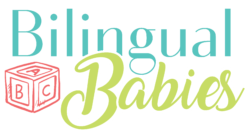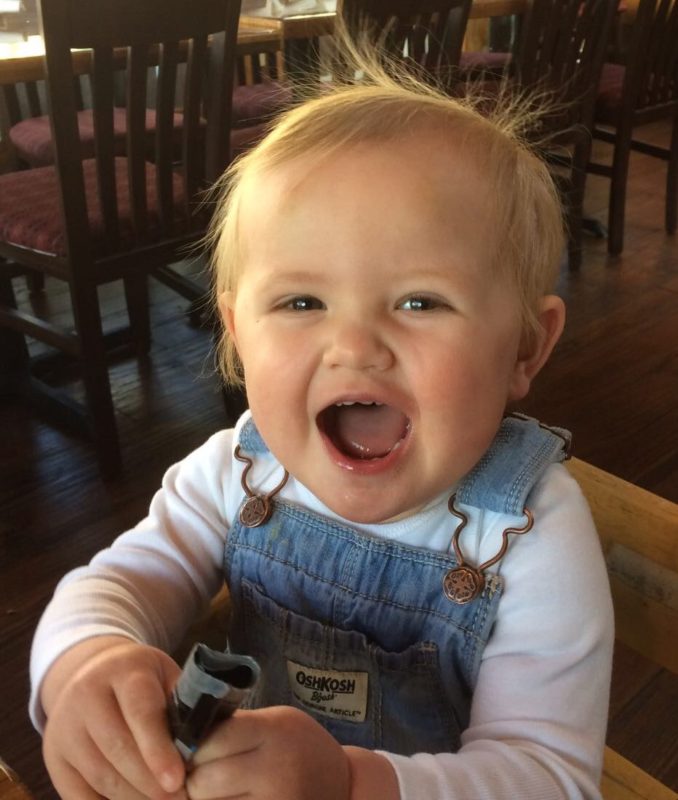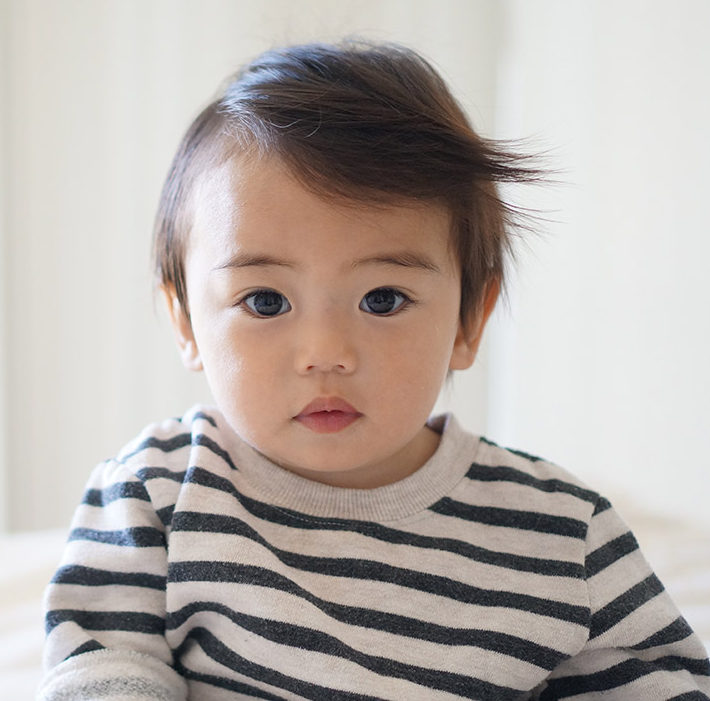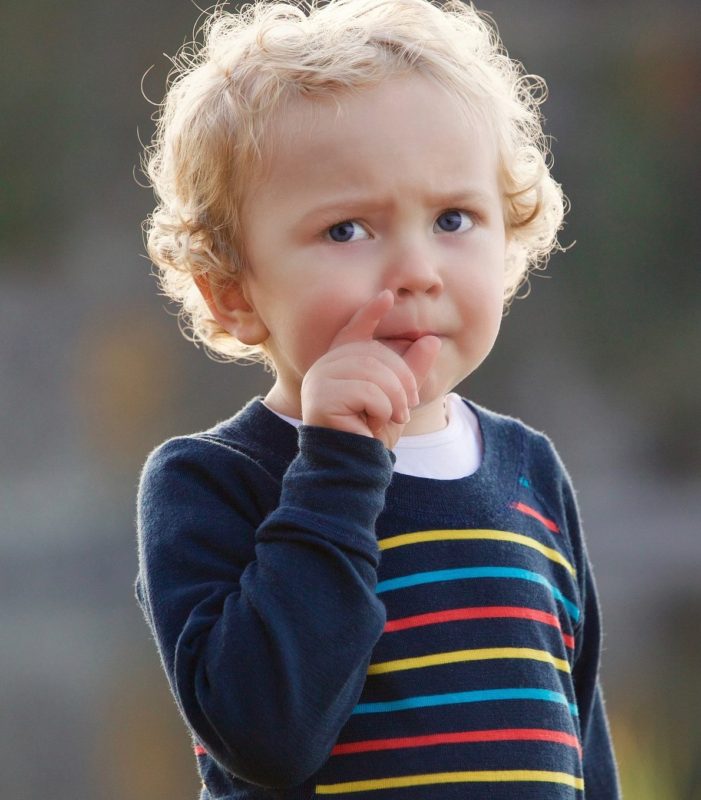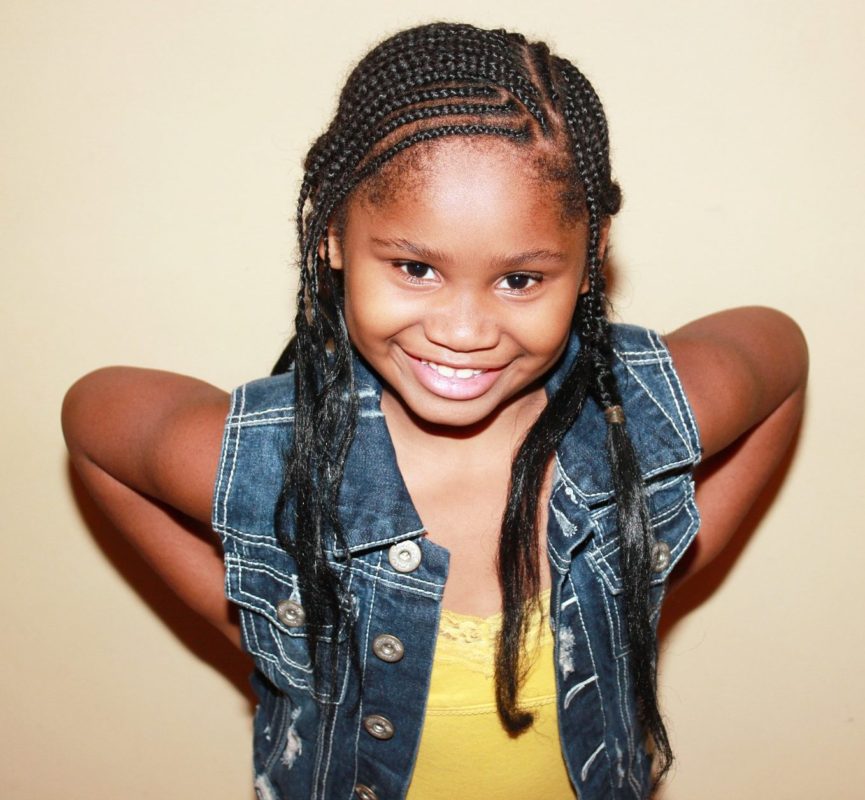Imagine tomorrow you wake up in a foreign place surrounded by people you barely know. They all speak a language that is completely alien to you. In order to communicate with them, you need to learn their language. You need to learn about 25,000 new words, learn the rules of putting the words together to form sentences, and pronounce words and sentences just like the people around you (aka like a “native speaker”). For all of that you have about 5 years. Oh, and you can’t write things down, consult books, or take classes. Sounds like quite a task? Well, that’s basically what any baby and child is facing.
Babies’ brains are pre-wired for learning any language
 Luckily, babies’ brains are pre-wired with the ability to learn any language or languages for that matter. They are like little “language sponges”—absorbing, mimicking, and manipulating language in a playful way as they engage in their lifelong journey of learning one or more languages. Learning a language—even your native language—is indeed a lifelong process! You are never fully done learning a language. Even as adults, we still learn new words here and there. So, bottom line, language development is a gradual process which is hard to quantify. Plus, every child is a little different in how he or she learns a language.
Luckily, babies’ brains are pre-wired with the ability to learn any language or languages for that matter. They are like little “language sponges”—absorbing, mimicking, and manipulating language in a playful way as they engage in their lifelong journey of learning one or more languages. Learning a language—even your native language—is indeed a lifelong process! You are never fully done learning a language. Even as adults, we still learn new words here and there. So, bottom line, language development is a gradual process which is hard to quantify. Plus, every child is a little different in how he or she learns a language.
Know about language development to provide better support
But even though there is no clear-cut framework, it’s important to have at least a general idea about how language develops. If we know how children acquire (i.e., learn) language, we can provide better guidance and support for their development. For some tips on support click here. So a better understanding of children’s language development can be helpful for us as parents and teachers.
Meet the milestones
Language experts have identified what Pearson (2008) has called “smaller finish lines or landmark events by which we judge our progress” (p. 61). So the following milestones mark a child’s path towards language. By the way, here are some facts before you get into it:
- Language develops in pretty much the same way across all languages
- Children who are raised with two or more first languages follow the same development paths as monolingual children.
- Language professionals distinguish between receptive (what a child can understand) and productive (what a child can say) language abilities.
- Reception always precedes production. Children usually understand more than they can say.
IMPORTANT: Each child is unique in the way that she develops language so some children may reach the following milestones earlier, others may reach them a bit later. Important is that there is noticeable progress!
Sounds: Birth to 5 months
Baby understands:
- From the first day, your baby is following what you said so she has a basic understanding of turn taking
- Follows a speaker’s gaze to the left and right (though not if you look above her head)
Baby produces:
- Produces vowels (cooing) like aaah, oooh and maybe even some guttural sounds (grrrr)
- Vocalizes pleasure and sadness
- Smiles
Syllables: 6 to 9 months
Baby understands:
- Understands and reacts to her name
- Starts to understand the meaning of no (or in our case “nein”)
- Looks into the direction into which you point (doesn’t just look at your finger)
Baby produces:
- Starts producing sounds, including consonants like ‘b,d,m,n’ and short vowels like ‘a,e,i,o,u’. The biggest step at this age is that babies start to string vowels and consonants together, which results in reduplicated babbling (bababa, mamama) and variegated babbling (badabada, wadawada).
- Starts producing “raspberries,” i.e. thrills with the lips (awesome with a mouth full of food or water)
Babbling: 9 to 12 months
Baby understands:
- Begins to recognize words of things in immediate surrounding
Baby produces:
- ba, da, sh or f sounds
- Usually first word (between 9-15 months); oftentimes first words contain “ba” syllable and are words from the immediate context (e.g., ball, bye-bye, baby)
In the first year, your child will most likely coo in different pitches and volumes, giggle, squeal, play with sounds and begin to communicate. Babbling is a key milestone during the first year. It is often followed by the ‘jargon phase’ where babies put random sounds together that mimic the intonation of words (but this jargon speech at this stage doesn’t really mean anything). Around her first birthday, a child usually starts saying her first real words.
Words: 12 to 18 months
Baby understands:
- Average number of words they understand:
- girls: 190 (ranging from 60-400)
- boys: 140 (ranging from 50-350)
Baby produces:
- Average number of words they can say:
- girls: 112
- boys: 75
Between 1-2 years, your child will understand and learn to use more and more words as well as different types of words. First, she will understand mostly nouns (e.g., ‘bus’, ‘milk’ and ‘mama’). Then she’ll gradually learn a few verbs such as ‘sit’ or ‘eat’. Adjectives come next (e.g., ‘big’ and ‘wet’).
Two-word sentences: 18 to 24 months
Baby understands:
- Understands most of what is said to her (especially with high context support)
Baby produces:
- Two-word sentences (usually starts at 18 months or 50 words)
- Vocabulary spurt: they learn new words very quickly (also the ones they are not necessarily supposed to learn and reproduce in public)
- Basic grammar (e.g., plural -s or progressive forms like “Mommy sleeping”)
In her second year, your child’s vocabulary grows considerably. She starts to say two-word ‘sentences’. She’ll understand much of what you say to her, and you should be able to understand most what she says to you .
Simple sentences: 24 to 36 months
Baby understands:
- Sequence of events
- More abstract things such as people’s feelings or shapes, colors, and sizes
- Can follow two-step directions
Baby produces:
- Has a vocabulary of about 1000 words
- Can speak simple sentences with 3-5 words about immediate context
- Can recount simple events in the past tense
- Uses more grammatical structures that resemble adult grammar
Your child uses longer, more complex sentences now. Pronunciation is becoming clearer so complete strangers should be able to understand most of what she says by the time she is three. Your child might start to be ore of a “chatter box”.
Complex sentences: 36 to 48 months
Baby understands:
- Nearly everything that is being said
Baby produces:
- Can rhyme words
- Can form sentences with 4-5 words
- Can string sentences together
Your child starts to tell more stories and talk about a wide range of topics. The stories might be quite creative. Her vocabulary is growing every day. She might start experimenting with more complex sentences that include words like ‘because’, ‘so’, or ‘if’.
Metalinguistic skills: <5 years
Baby understands:
- Starts to understand figurative language
Baby produces:
- Can take listener’s perspective
At the age of five, your child begins to understand the concept of time– for example, night, day, today, and yesterday. She can also use the correct form of verbs in order to talk about events in the past (I talked to grandma.) or in the future (I will talk to grandma). Also, your child will start to realize that there are exceptions to grammar rules (e.g., ‘went’, ‘broke’ and ‘brought’ rather than ‘goed’, ‘breaked’ and ‘bringed’), although it takes a bit longer for them to learn all exceptions.
What about bilingual children who grow up with two first languages?
Children who are raised with two or more first languages follow the same development path as monolingual children. Their milestones and development in terms of both vocabulary and grammar are pretty much the same. The effect of multiple languages is found—if at all—in a slight delay in vocabulary and grammar at the very early stages. While some studies have found bilingual children to be within monolingual parameters for the age in which they meet early vocabulary or grammatical milestones, other studies have found that bilingual children lag behind slightly in terms of grammar and vocabulary when compared to monolingual children (see Hoff et al., 2012; Petitto et al, 2001; Petitto & Kovelman, 2003). For example, I noticed that compared to her monolingual friends at daycare, Ella uses slightly fewer 3-word sentences (speaking of having a nerdy language mom!).
However, this finding and observation is not very surprising—especially at a very young age. Children develop their language abilities because they interact with speakers in a given language. When more than one language is involved, they have to split their time between the multiple languages and are exposed less to each of the multiple languages. But when both languages are taken together, bilingual children tend to outperform their monolingual peers. In other words, bilingual children’s vocabulary when viewed across both languages tends to be equal to or greater than the number of words monolingual children know. Similar findings were reported for grammatical knowledge. So, you go, bilingual babies!!
If you made it all the way down here…kudos to you…and many thanks for reading!
Resources:
-
-
- HOFF, E., CORE, C., PLACE, S., RUMICHE, R., SEÑOR, M., & PARRA, M. (2012). Dual language exposure and early bilingual development. Journal of Child Language, 39(1), 1–27.
- MACROY-HIGGINS, M. & KOLKER, C. (2017). Time to Talk: What You Need to Know About Your Child’s Speech and Language Development. New York: AMACOM.
- PEARSON, B. Z. (2008). Raising a bilingual child.New York: Living Language.
- PETITTO, L., KATERELOS, M., LEVY, B., GAUNA, K., TÉTREAULT, K., & FERRARO, V. (2001). Bilingual signed and spoken language acquisition from birth: Implications for the mechanisms underlying early bilingual language acquisition. Journal of Child Language, 28(2), 453-496
- PETITTO, L. & KOVELMAN, I. (2003). The bilingual paradox: How signing–speaking bilingual children help us resolve bilingual issues and teach us about the brain’s mechanisms underlying all language acquisition. Learning Languages, 8(3), 5–18.
- http://raisingchildren.net.au/articles/language_development.html/context/1955#Language
-
